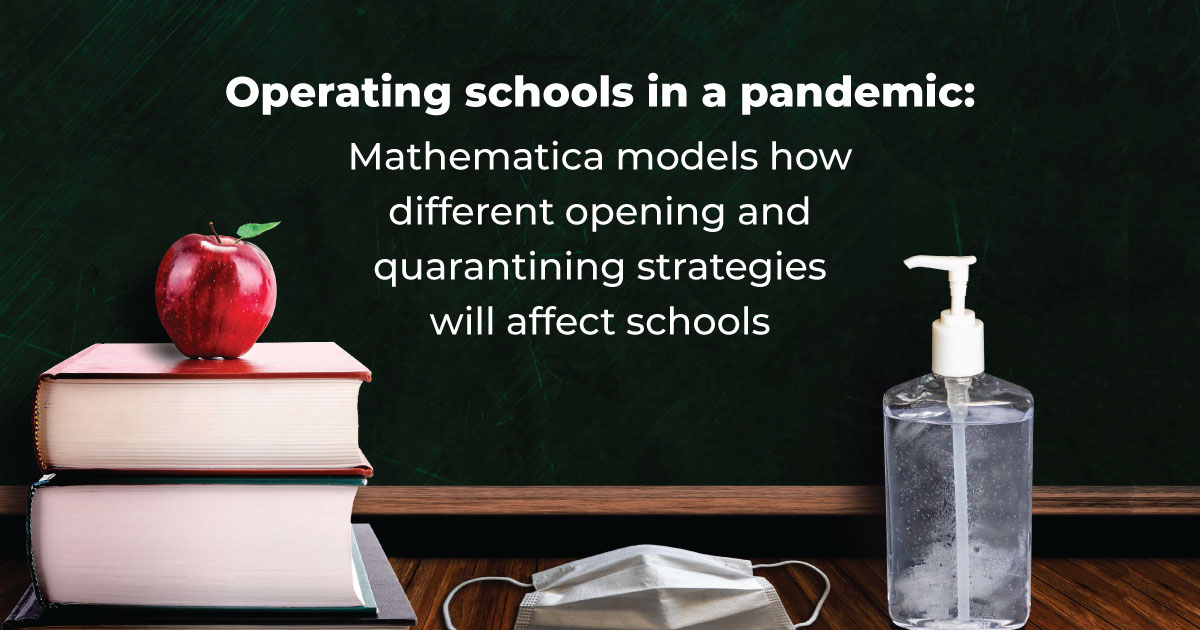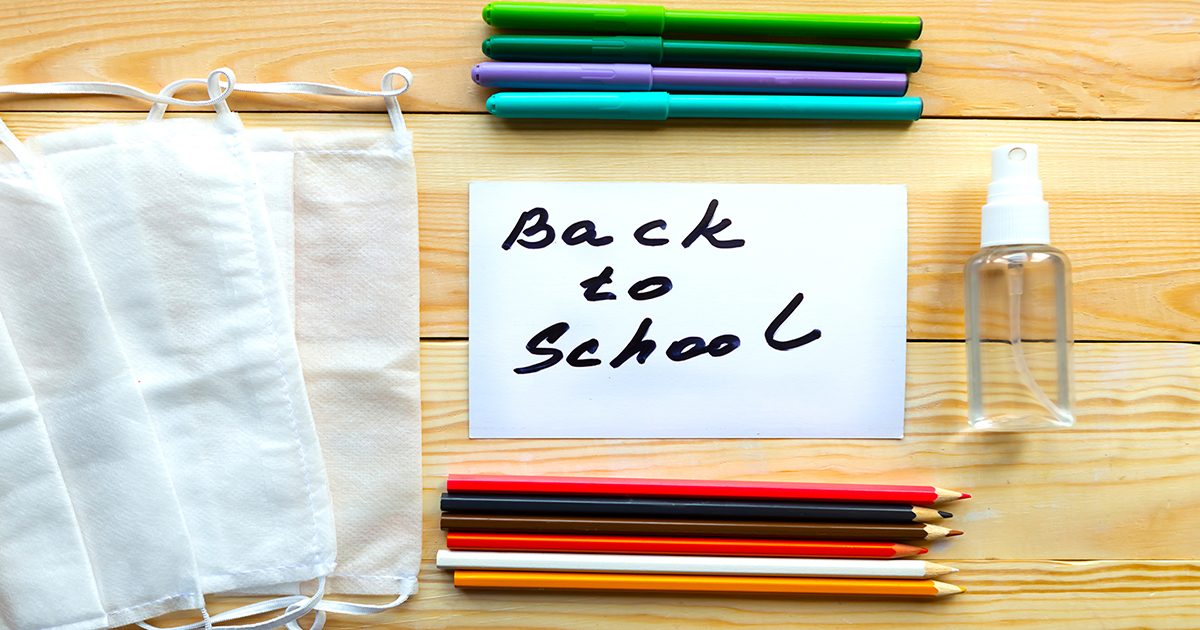As schools across the country begin a new academic year, the persistence of COVID-19 continues to create challenges for traditional approaches to in-school learning. Unlike the spring, when blanket closures of school buildings led to ad hoc remote learning for millions of American school children, a new school year opens the door for new approaches based on a growing body of evidence about how the virus is transmitted and how transmission risk can be reduced.
To help educators make informed decisions about how to offer needed in-person educational opportunities while mitigating the risk of infection spread, Mathematica used agent-based computational models to run thousands of simulations of infection spread across more than 100 different school situations, varying by school level, school size, operating strategy, approach to quarantines and closures, and the local community’s COVID-19 infection rate. The results offer educators and civic leaders a set of comparable schools to their own, and provide insights beyond the heated political rhetoric about the best approaches for individual communities and schools to mitigate the spread of COVID-19 while providing meaningful learning opportunities.
The study, conducted for the Pennsylvania Department of Education, modeled outcomes for various in-person, hybrid, and distance learning approaches to determine how many infections a school is likely to experience, the total number of likely infections in a school at the time the first infection is detected, and the percentage of school days a student is likely to be able to attend in person.
The study expands on previous work for the Pennsylvania Department of Education and the Institute of Education Sciences at the U.S. Department of Education to simulate COVID-19 spread in schools, now examining a wide range of scenarios that vary based on community infection rate, grade level, operating strategy, local COVID-19 testing capacity, and the school’s response to infection.
Key findings from the latest modeling include:
Precautions such as requiring masks and limiting the mixing of students outside of classes can measurably reduce infection spread in schools.
In secondary schools in communities with moderate local infection rates, operating full time without precautions is likely to accelerate the spread of infections. But enforcing mask requirements and eliminating additional student mixing outside of class (for example, in the cafeteria or on the playground) can substantially slow the spread of infections in the school.
Hybrid approaches where smaller groups of students wearing masks attend in person part time dramatically reduce the total number of likely infections in a school.
Part-time hybrid operation reduces infection spread in several ways: it reduces the number of contacts by each student; it allows more physical distance between students in class; and it reduces the number of days in which contact occurs in the school. In consequence, the model results suggest that under a hybrid approach with precautions, most infections coming from outside the school will produce zero additional infections in the school.
Infection rates in elementary schools are likely to be lower than in secondary schools employing the same operating strategies.
Elementary schools tend to have less student mixing during the course of the day, and evidence indicates that younger children are less susceptible to becoming infected than older children. As a result, elementary students and staff are less likely to become infected in school.
Part-time hybrid operation is far more effective at reducing infections than temporarily closing the school building each time an infection is detected.
If all students are coming to school daily, temporarily closing the building every time an infection is detected modestly reduces the total number of infections. But temporary closures are far less effective in reducing infection spread than using a hybrid operating strategy from the start, and closures disrupt school schedules unpredictably.
In schools that are using a part-time hybrid approach, quarantining close contacts of individuals with detected infections is sufficient to keep the school’s infection rate low, while closing entirely reduces the number of days that students can attend with no demonstrable benefit in further reducing infections.
Hybrid approaches are likely to keep infection rates low enough that temporary school closures are superfluous.
Schools using a hybrid approach in a community with a moderate infection rate are likely to experience little or no unplanned disruption in the number of days students can come to school.
Because part-time hybrid approaches dramatically reduce infection spread in schools, quarantines will not be needed frequently, and most students will be able to attend school in person on nearly all scheduled days.
Regardless of precautions taken, there is a chance that a school could have an infection on its first day of operation.
Transmission of the virus has a large random element, which means that even the most cautious school can be unlucky—underscoring the need for careful adherence to mitigation strategies to minimize the risk of spread in the school.
“These simulations provide quantitative evidence that the kinds of precautions being urged for adults—such as wearing masks and maintaining physical distance—can mitigate infection spread in schools,” said Brian Gill, a senior fellow at Mathematica and director of the project. “Moreover, school and civic leaders in many communities can have confidence that implementing a part-time hybrid operation alongside precautions will dramatically reduce the likelihood that schools will contribute to growing outbreaks.” Gill added that “even so, the simulation results also show that there is no one-size-fits-all solution: schools in different circumstances may reasonably adopt different operating and closure approaches. Our results show the potential implications of different choices, but no matter the initial approach, every school needs to have a plan for what to do when a student or staff member becomes infected.”
Find out more in the full report and blog post. To learn more about this study and how the simulations can help you make informed decisions for your school, join Mathematica for an upcoming webinar on Wednesday, September 30, from 11 a.m.–12:00 p.m. ET. Register now.
Read more about how Mathematica is lighting the path to progress against the COVID-19 pandemic.


